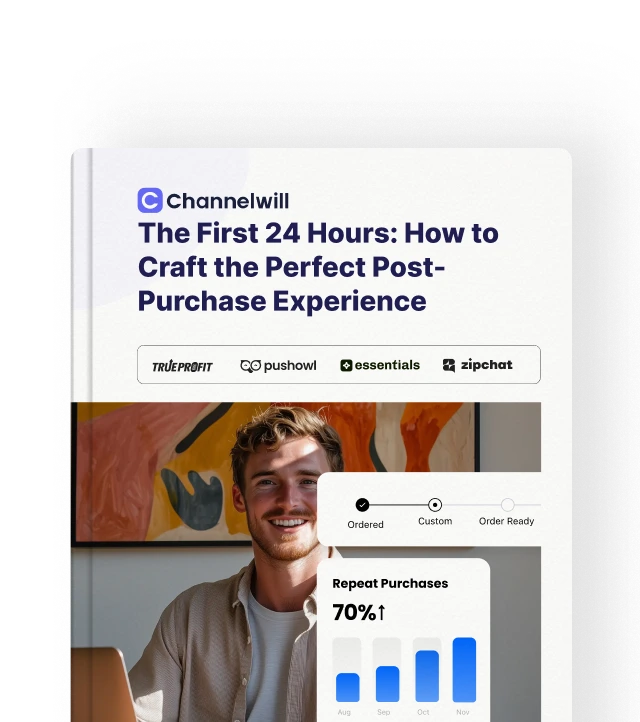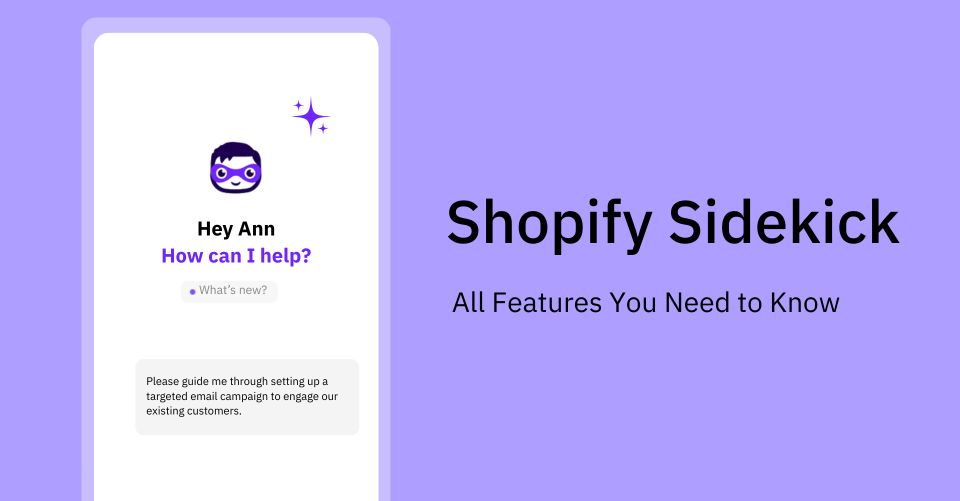Don’t underestimate the power of the drop-shipping industry. It is one of the top industries, growing exponentially. According to Grand View Research, the dropshipping market is projected to reach 257 billion USD by 2025. Guess what? Its growth rate of 23.4% annually is another shocking fact you’ll know. It will make 1 trillion USD by 2030! Amazon and Shopify are both the top platforms for easy dropshipping, fast shipping, and smooth integration. Want to know how to dropship on Shopify? This article will disclose the step-by-step guide to the dropshipping process of Amazon and Shopify!
What Is Dropshipping?
Maybe you have heard of B2B or B2C businesses. In that business model, sellers keep the inventory in stock before selling. To your surprise, dropshipping is a bit different and cool.
In dropshipping, the seller vends the inventory without having stock in the warehouses. They ship directly from third-party service providers.
Why? It saves multiple overhead costs, such as warehousing costs.
How Does The Whole Dropshipping Process Work?
Before even the complete disclosure, there are three main chain links of the dropshipping process.
- The manufacturer or supplier. It is most often the product factory that manufactures the products and stores them.
- The seller. The seller is the person who has a retail store where he/she can sell the inventory.
- The consumer. The buyer visits the products in the seller’s store to purchase them.
Here is how this dropshipping chain connects these three business entities:
- In the dropshipping business model, the seller connects with the supplier. Import the product listings. And sells the inventory to the buyer.
- The shipping occurs directly from the supplier to the buyer.
In the route, the seller can ask the supplier to change the shipping labels or add customized packaging. Plus, the shipping fee depends on the seller.
How does the seller make money?
Suppose you buy a mouse from a supplier in stock for $5 per piece. But in your store, you list it for $10 or $15. Whatever you’ll make up from $5 will be the money in your pocket. That is how you’ll make some bucks.
Dropshipping Trends 2025
Dropshipping is constantly rising over time. It is growing at an exponential rate. You can read the detailed data of the forecast from 2025 to 2032, which is expected to reach 2 trillion USD.
Don’t miss the train of dropshipping and enjoy higher profits by selling popular products like the following:
- Clothing and accessories
- Electronics
- Beauty Items
- Home Goods
- Baby products
- Pet supplies
These are the most popular items in terms of sales and profits. You can prefer these niches based on your business prospects.
Shopify vs. Amazon Dropshipping: In-Depth Analysis
Whether on Shopify or Amazon, one thing is for sure: you want to sell. And it is mostly the business model that ensures the exact selling mechanism.
Here is a comparison of the different features of both sites.
Platform Type
Amazon is an e-commerce platform where you can market your product to consumers. Whether you are a company or an individual seller, Amazon entertains you. Does Amazon allow dropshipping? Yes, it does. You can dropship.
On the other hand, Shopify is a store builder. Hundreds of features, themes, and plugins are there to create a branded store. Moreover, you manage all your sales from a single dashboard with access to detailed analytics.
Pricing
Amazon has two plans. In one plan, you can pay per sale for 99 cents. In the second plan, you have to pay 39.99 USD per month.
Shopify has basic to advanced selling plans. And selling plan costs range from $39 to $399. Moreover, if you are an enterprise, Shopify Plus is a good choice.
Template and Design
Amazon doesn’t offer customization for stores. Sometimes, it is difficult for you to adorn your Amazon store.
In contrast, Shopify is the king of its domain by offering full customization. From changing themes to installing the plugins, you get all the facilities from Shopify. A real-time helper to make your store elegant.
Marketing Options
Amazon has PPC ads and sponsored ads for you to promote your products. It is, therefore, easier to generate sales only if the competition is less and your marketing strategy is a superpower.
Shopify allows integration with many channels, such as social media channels. You can directly promote your products. It is, again, very effective for your dropshipping business.
Transaction Fees
Amazon transaction fees are a specific percentage of the given product category. You need to calculate the fee based on your selling type.
Shopify doesn’t charge a fee if you use its payment processors for the transactions. For external payment processors, you must pay a 2% transaction fee with 30 cents on each transaction. It also varies depending on what subscription plan you are following.
Competition
Amazon has millions of sellers on its platform, creating ferocious competition. You will get compressed for a single mistake. A careful dropshipping blueprint can save you.
Shopify does not have high competition. With optimal customization, you can stand out among the other competitors. It all depends on your efforts!
Customer Support
Amazon supports the sellers through Seller Central. In case of any problem, the seller has to contact the Amazon team.
Shopify offers a whole methods to support.
- 24/7 Live Chat
- Email support
- Phone support
Sellers can contact the team whenever they want.
| Feature | Amazon | Shopify |
| Platform Type | Third-party Marketplace | Store Builder |
| Pricing | The individual plan costs 99 cents per sale, and the professional plan costs 39.99 USD per month. | The basic Plan costs $39, while the Advanced plan is $399 |
| Customization | Limited customization is available. | Full access to customization |
| Marketing Options | Amazon PPC Ads | Social media integration and marketing through various channels |
| Transaction fees | Based on Category | 2% for external payment processing with 30 cents per transaction |
| Competition | High competition among sellers | Every seller has their way of performing |
| Customer support | Chat support through Seller Central | 24/7 customer support through phone, live chat, and email. |
Benefits of Dropshipping From Amazon
Dropshipping from Amazon has attracted thousands of entrepreneurs globally. All thanks to the easy dropshipping. Here are some more benefits as well.
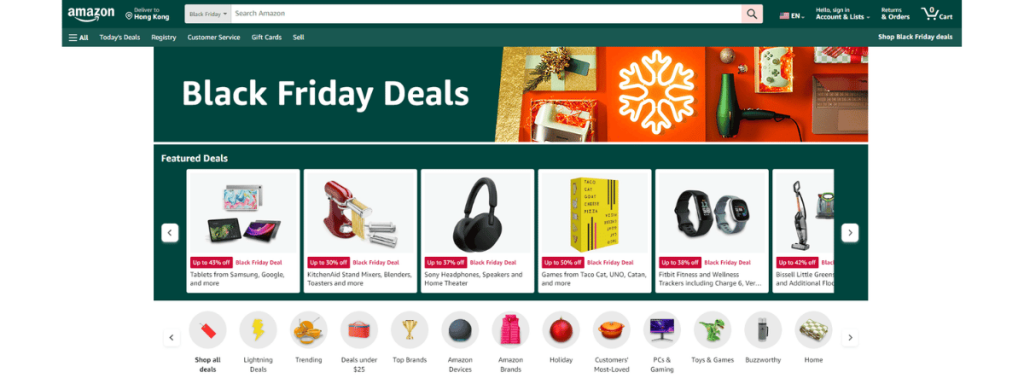
Fast Shipping Service
It is a timely shipping service. Amazon has its shipping service and offers perks to sellers.
Since you are dropshipping from Amazon sellers, it will be a huge opportunity to gain trust from your consumers. And smooth business expansion will make your bank.
Case: Mr. Tze is a drop shipper who made over 19k USD in just two months by dropshipping on Shopify. He sells plush toys and relevant merchandise. Success was not straight, but customer trust and quality product service with shipping led him to make a considerable amount in two months. (Subtle Asian Treat)
Diversity of Products
Amazon has millions of products in its directory. Many sellers are competing just for one product and making their fortune.
Such a high range of products does one thing: it gives you a DIVERSITY of inventory. It is a piece of cake to find the correct item at affordable prices to make high margins.
Top Quality
Amazon has no compromise on quality. An order defect rate greater than 1% kicks out the sellers.
That means the drop shipping business is going to skyrocket your trust ratio among customers and will give you quality products to dropship on Amazon.
No Overhead Costs
Your supplier is undoubtedly an FBA seller. That makes the whole supply chain smooth and overhead-free. You don’t have to pay for the warehousing.
Multiple tools go easy on the importing process and help you optimize your business.
How Does Shopify Help Dropshipping Brands with Customer Relationships?
The customer journey is the crux of the matter for success. And Shopify gives you the power to create a successful brand identity.
Here are some ways to build relationships with consumers when you dropship Amazon products on Shopify.
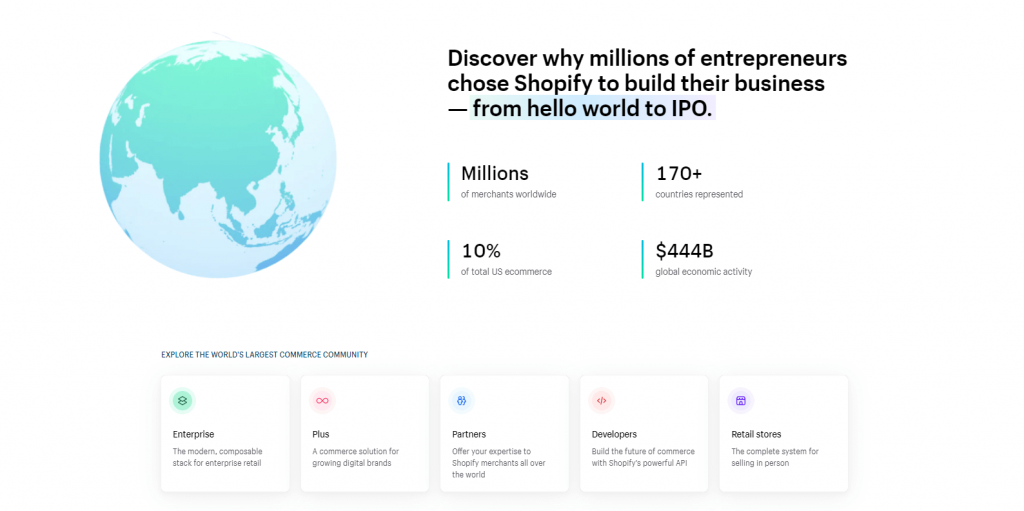
Customized Stores
One of the unique ways to present your brand in front of consumers is to customize your stores. Shopify helps here with hundreds of themes and plugins for your support.
You can set up a store. Embellish its button according to your business logo.
The best part?
You have 100% control over your store, not like Amazon, where you have to worry about the ORDER defect rate and many more issues.
Organize every single feature as per your business. A separate brand identity is there!
Customer Engagement Tools
Shopify gives you many customer engagement tools to market your products and engage more consumers.
Send emails to your consumers. Message them about some exciting efforts. And never leave any stone unturned for your customer engagement.
You can try Trustoo Loyalty for consumer engagement as well.

Easy to customize your brand loyalty program
Messaging Tools
Shopify has a messaging tool. You can connect with your consumers from anywhere and everywhere, without any exceptions.
Stay in touch with consumers and offer them excellent support at no extra cost!
Customer Segmentation
Say welcome to the magic tool to optimize your marketing strategies. Shopify is ahead of its competitors because of the leverage of customer segmentation.
You can divide the consumers based on their characteristics. Know what, how, and where they like to spend the most. And then make a flawless strategy from Amazon Dropship to the Shopify store.
Marketing Insights
Worried about the customer journey? Take a look at the marketing insight tools on Shopify. Download detailed reports. And know what your consumers like the most.
Detailed marketing analysis will make the customer journey transparent and easy for you. Better understand your consumers. And enhance sales with exemplary efforts.
Step-by-Step Guide to Dropshipping from Amazon to Shopify
Wondering how you will dropship Amazon products on Shopify? Here is the step-by-step guide on how to do that.
Step 1: Do Your Research
You can’t expect better without research. But what do you need to research?
Find a lucrative niche. And devise a proper strategy to sell. All this is due to high competition among the sellers that will eat you up, even at the start of the business.
Finding the right niche is a big cheese! Follow these tips to explore it!
- Find the least competitive niche.
- Check the product demands.
- Is dropshipping from Amazon to Shopify possible in that niche?
- Know the profit margins to earn some money.
Step 2: Create an Amazon Account
The kick of the dropshipping from Shopify to Amazon starts with creating an Amazon account.
Start with the Amazon account creation.
- Sign up on Amazon Seller Central.
- Add your name and email address.
- Set up all the requirements, like the payments and address.
Step 3: Sign Up On Shopify
Shopify is a platform where we will do Amazon Dropshipping. Take a moment. Visit Shopify. And sign up. You’ll beat the clock because the process is straightforward.
- Go to the Shopify Website.
- Hit the sign-up button.
- Add your email address and basic information.
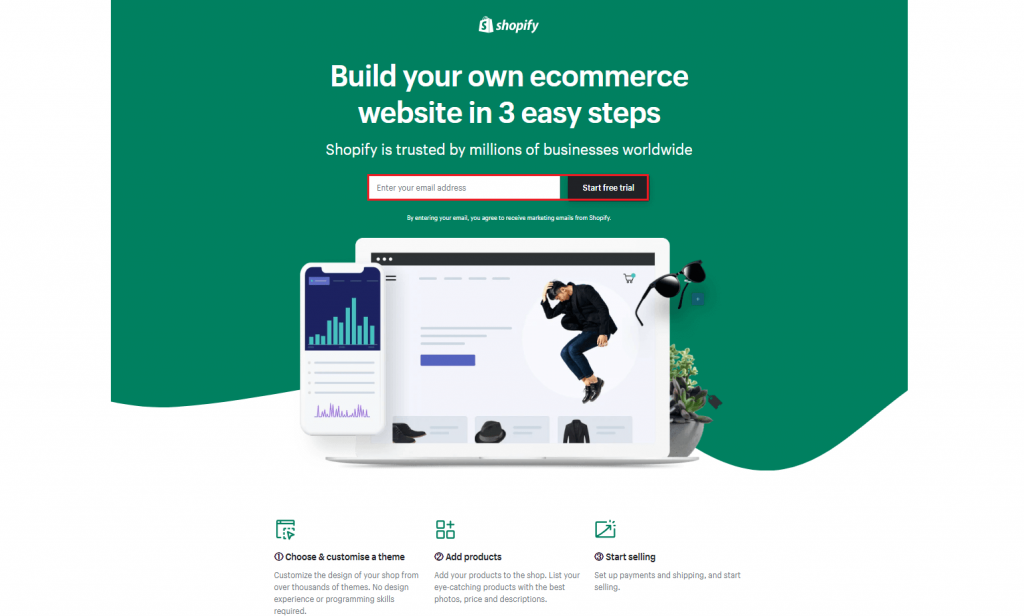
Step 4: Create and Embellish Your Shopify Store
Creating a Shopify store isn’t technical at all. Make sure you’ve followed the right steps. There are multiple steps to dressing up your Shopify store.
4.1 Choose a Domain Name
Where is the address of your store? It is the domain name that does wonders at this point. But remember, it comes at a cost.
Follow the tips to get the right domain name.
- Try to hit out at the keyword of your store name.
- The domain name must not be short.
- Explore the cheaper domains to save some costs.
Many domain name servers, like NAMECHEAP or GODADDY, are available.
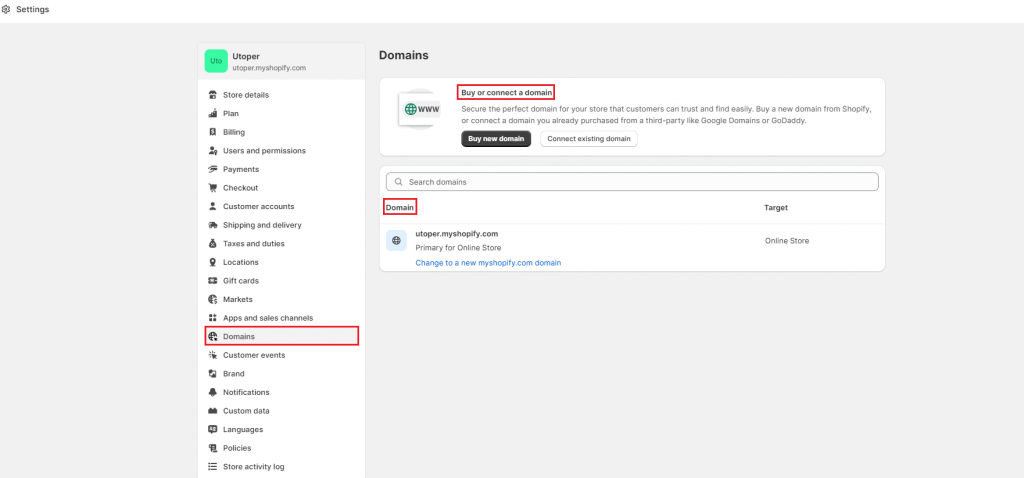
4.2 Set Up Themes
Themes are super important because they make the first impression on the reader. A good theme can improve the visit time of an average buyer and the probability of higher sales.
Customize your themes. Shopify has hundreds of themes. Make sure your theme best fits your brand. Plus, take a moment to check its price. Expensive themes do not mean you’ll succeed.
Here is how you can customize Shopify themes.
- Go to your Shopify dashboard.
- Find the Online Store, press it, and then click on the Themes.
- Customize the current theme according to your needs or,
- Add and customize another theme from the Theme library per your needs and preferences.
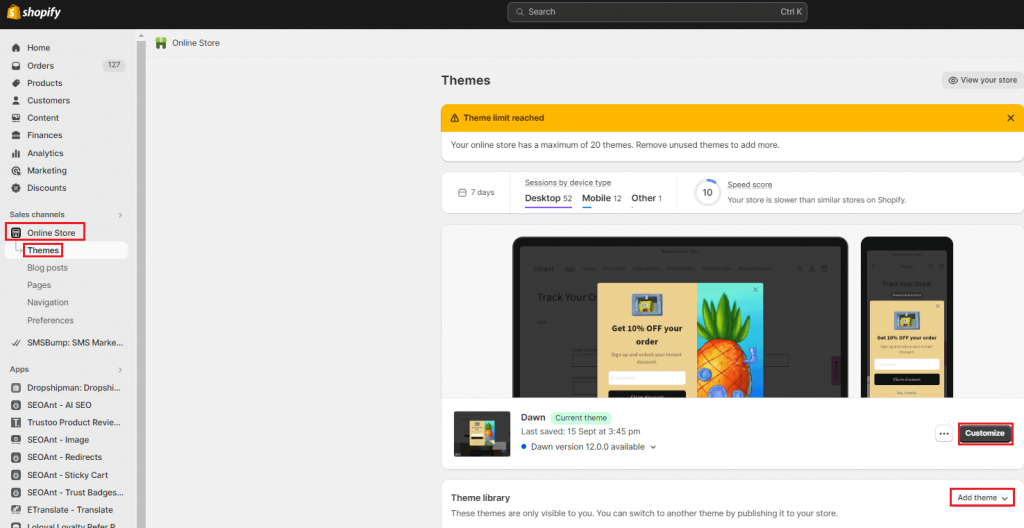
4.3 Add the Payment Options
How do you want to get paid? Some sellers come up with credit cards. Even if you do not plan to get paid through a credit card, no worries. Shopify got you!
Here are the steps for setting up the payments.
- Go to Settings.
- Click Payments.
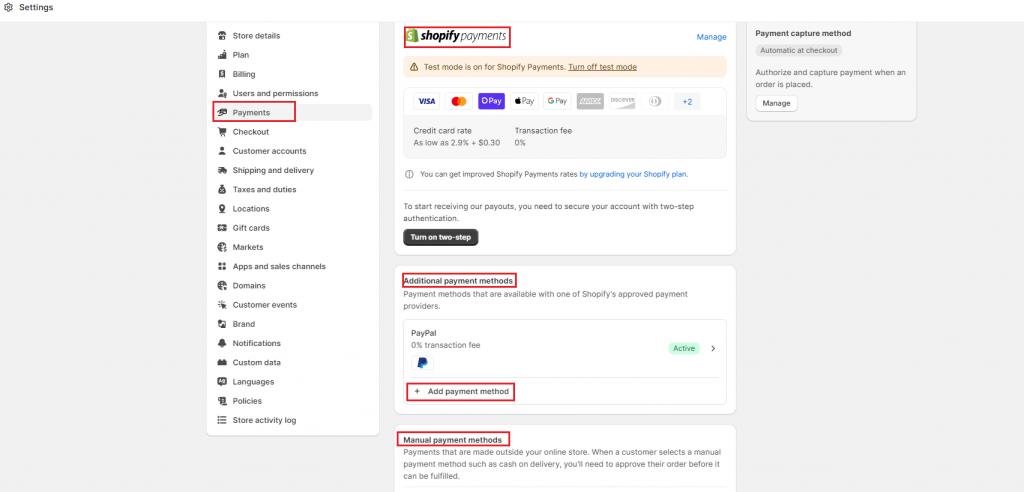
For Credit Card payments:
- Click Activate Shopify Payments. Shopify payments have no transaction fees.
- If you want to select other third-party payment processors, click Sell all providers.
For other payments:
- Move to Additional Payment Methods.
- Choose PayPal or Amazon Pay if you want buyers to pay through these two methods.
- Otherwise, click the Add Payment method. Choose other payment options you have!
To allow payments made outside your online store, like Cash on Delivery(COD), or create a custom payment method, you can scroll down to the Manual payment methods section, and select the options you want to make by clicking Add manual payment method.
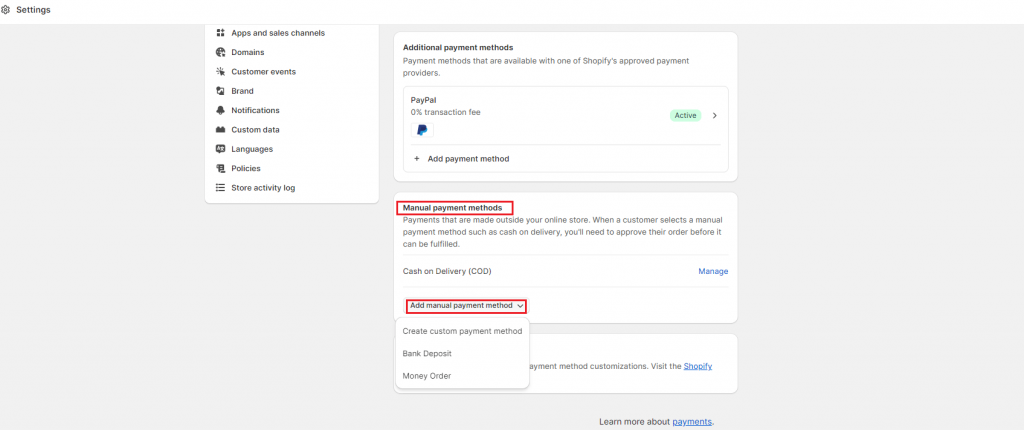
4.4 Input Shipping Rates
It is against Amazon’s drop shipping policy if you use Amazon shipping rates. So, use your own based on the product type and the customer location when dropshipping from Amazon to Shopify.
- Go to Settings.
- Navigate to the Shipping and Delivery section.
- Set Shipping rates.
Step 5: Time for Product Listings
To sell the products on a Shopify store, you need to list them. The listing process includes:
- Move to the Shopify Admin section.
- Navigate to the Products section.
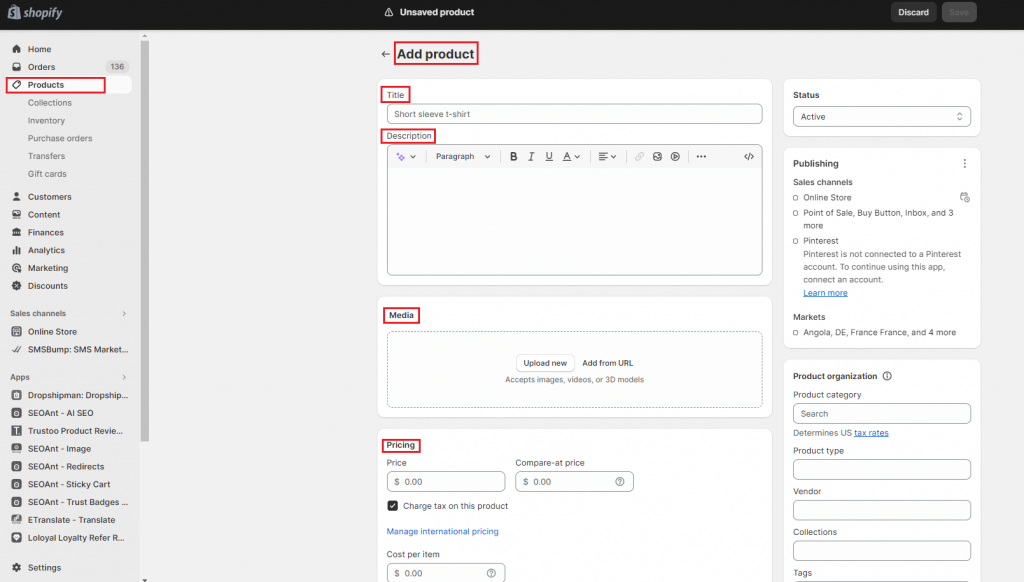
Various ways to add the products are as follows:
- Do it manually: Upload all your products manually.
- Import in bulk: Save the headache of manual addition of 100+ products. Make a CSV file for all of your products. Adjust it according to the Shopify Guidelines. And upload it! Simple and effective.
- Use importing tools: These tools offer features like one-click import. You can bulk import through CSV files as well. Plus, it has a Chrome Extension that further facilitates importing. Download the Chrome Extension and add products directly to your store.
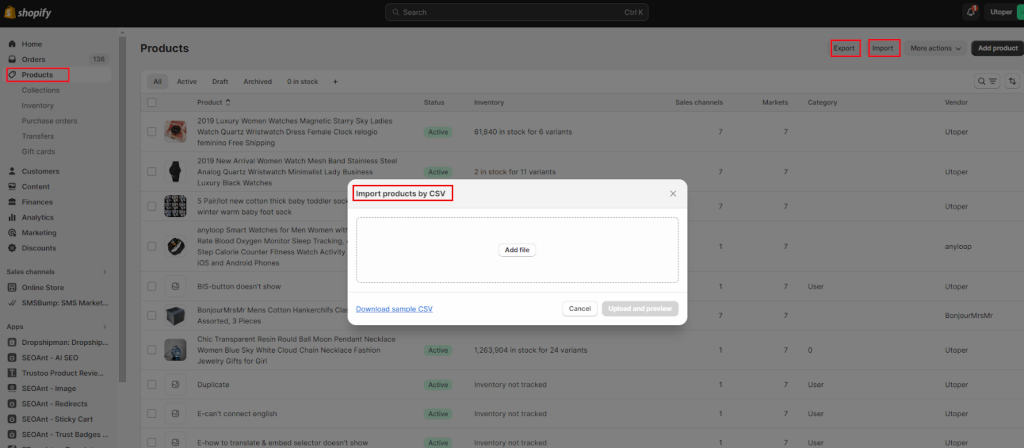
Step 6: Marketing is Necessary
For a business, popularity is very crucial. Customers must know about your business. And marketing helps advertise your brand while promoting products, speeding up your business reputation.
Here are various ways to do marketing.
- Do SEO for organic traffic. Use SEO tools like SEOANT on Shopify
- Promote products on Social media.
- Use Shopify Product Ads.
- Consider Google PPC ads.
- Do paid promotion on Facebook.
- Influencer marketing on TikTok and Instagram.
All these marketing strategies are your savior. Have them on time. And promote your products to earn more sales.
Dropshipping Blueprint to Grow Your Brand to The Next Level
Have a long-term perspective on selling through the dropshipping channels? It is going to be exciting for you with a proper dropshipping blueprint.
Here is the experts’ take on scaling the dropshipping business.
Offer More Than Just A Product
Customers always look for special offers like discounts, excellent customer service, and branded packaging. A successful entrepreneur always feels for customers and provides them not only with the products but also with premium support and heavy discounts.
You can win the loyalty of the consumers and increase your retention rate by offering such exciting offers!
Automate Your Dropshipping Process
A single-minute delay can cause your customer to revert to another competitor.
Use the dropshipping apps like Dropshipman. Dropshipman: Easy Dropshipping. Dropshipman can help you do the following things, saving your time and optimizing workflows.
- Automates the order fulfillment process.
- Provides access to customized packaging and storage services.
- Enhances customer experience with automated processes.
- Maximize profits for your business.
You’ll save time not only for yourself but also for consumers because they don’t have to do much wait for the product shipping when it is all 100% automated.
Turn Heads to Excellent Marketing
One of the biggest challenges is a lack of marketing skills! Some businesses don’t even market products efficiently.
In the early phase of the business, there is no traffic. You need to let people know about your dropshipping business. And it is possible with a top-notch marketing strategy.
There are various sources.
- Do SEO. It is a free method that helps promote the products efficiently. Let search engines like Google introduce the products. And increase the conversion rates efficiently.
- Do the PPC ads. These have better results in the marketing industry.
One of the best tools for marketing out there is Trustoo. It offers excellent social proof review display and effective marketing.
Make it easy to build and scale a reliable brand
Personalized Customer Service
It is better to offer one-on-one customer support, which is more responsive to consumers and speeds up problem resolutions.
Personalized customer service will win you, consumers. Provide customer service like:
- Social Channels
- Phone Support
- Support tickets
- Emails
- Live Support
Be available 24/7 to tackle all customer problems. You’ll experience a massive wave of new consumers and a high trust in the dropshipping business.
Endnote
Dropshipping is excellent if you see it from a business perspective: reduced overhead costs and higher profit margins. Over time, it will further grow.
If you plan to dropship from Amazon to Shopify, it can be super competitive. The reason is the rising competition from drop shippers on both Amazon and Shopify.
For that reason, you always need a proper strategy, like:
- Do market research: Get market intelligence data and research profitable products.
- Follow the rules: Whether Amazon or Shopify, strictly follow the rules for smooth selling.
- Differentiate your brand. In competition, you have to stand out. At that time, unique products and storefronts are the keys!
- Advertise: Marketing is necessary to access the customers. So do it!
FAQ
Yes. You can dropship on Amazon if you follow their dropshipping policy and subscribe to their individual or professional selling plans. As long as you follow Amazon’s drop shipping policy, you are safe to sell.
No rocket science is involved. You need top product-hunting tools like Jungle Scout or Helium 10. Find out the best-selling items. And start selling. Make sure the product demand is high but not the competition, and then dropship from Amazon to Shopify.
There are various factors to look for in the dropship suppliers.
1. Check how many years the supplier has spent dropshipping.
2. Read customer reviews.
3. Always focus on negative reviews to know where the supplier is lacking.
4. Talk to the supplier and negotiate your business requirements.
5. Close the deal at an affordable price.
Go to your Amazon account, click the profile button to see who you follow.
All the brands you follow will pop up on your screen.
Hit their profile button, and you’ll be on their respective pages in the very next moment.



